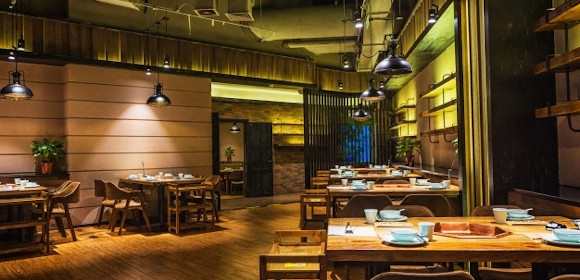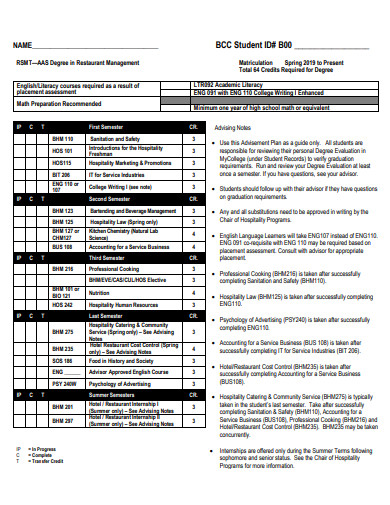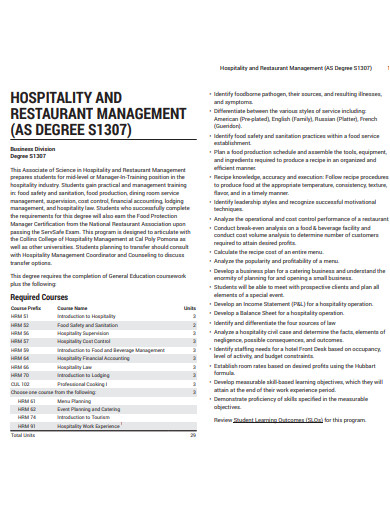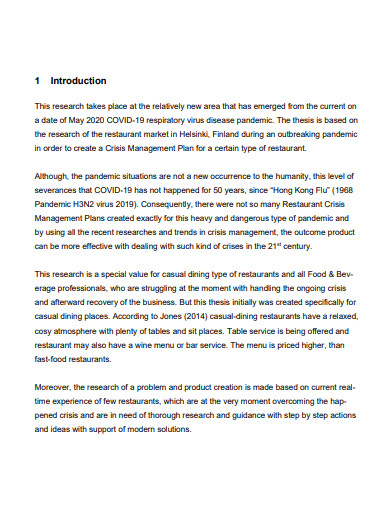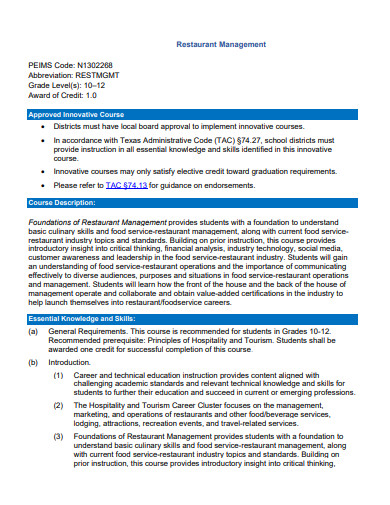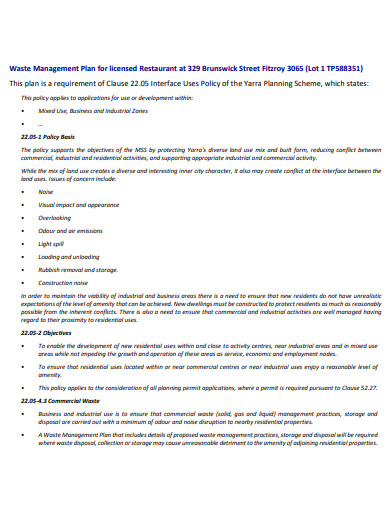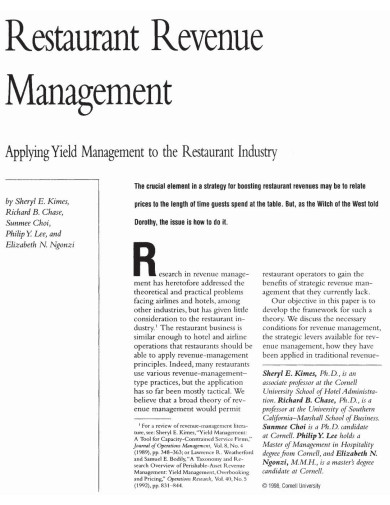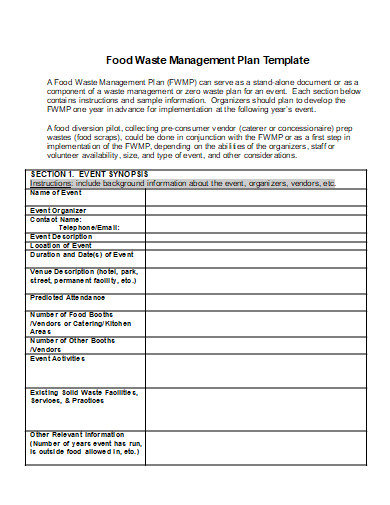Catering to customers day by day, making them more than satisfied with the dining experience you provide in your restaurant is crucial to the success of your restaurant. This can be daunting. Restaurant management mixes everyday operations with long-term growth by focusing on the bottom line. Restaurant managers may be in charge of managing labor and food expenses, inventory management, restaurant marketing. Your restaurant can be managed smoothly and effectively with a solid plan. As a restaurant manager, this is your responsibility. Look no further! In this article, we provide you with free and ready-to-use samples of Restaurant Management Plans in PDF and DOC formats that you could use for your restaurant. Keep on reading to find out more!
10+ Restaurant Management Plan Samples
1. Restaurant Management Plan
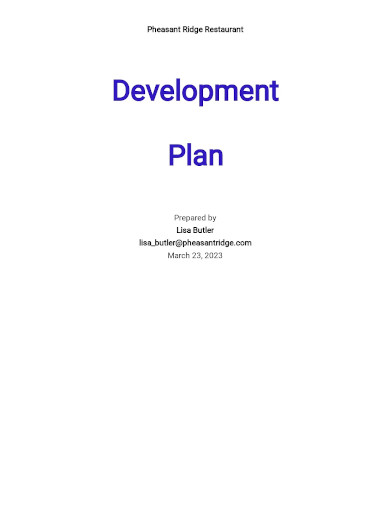
2. Restaurant Risk Management Plan
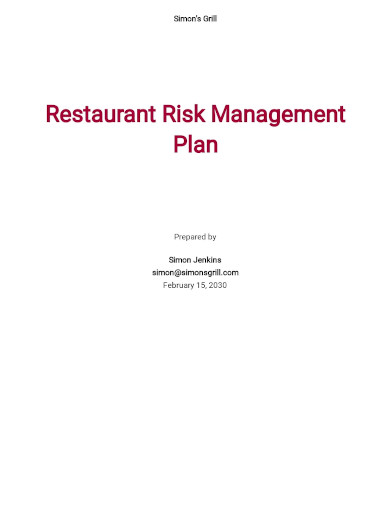
3. Restaurant Crisis Management Plan
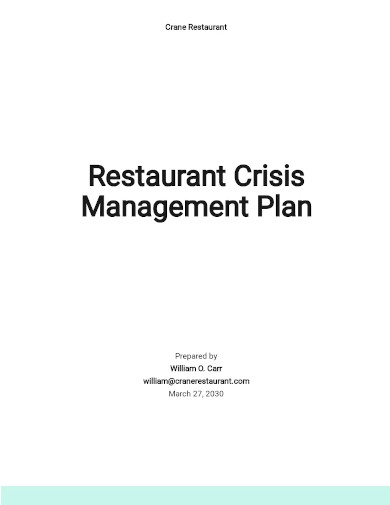
4. COVID-19 Safety Management Plan for Restaurants
5. Simple Restaurant Management Plan
6. Hospitality and Restaurant Management Plan
7. Restaurant Crisis Management Plan
8. Restaurant Management Plan Example
9. Waste Management Plan for Licensed Restaurant
10. Restaurant Revenue Management Plan
11. Restaurant Food Waste Management Plan
What Is a Restaurant Management Plan?
Your documented approach for getting your restaurant to where you want it is called a restaurant management plan. New ideas are useless until they are put into practice. A thorough plan for the restaurant that clearly outlines the restaurant’s intended objectives, as well as roles, dates, and milestones for completing operating activities. It serves as a guide and a road map for your restaurant’s operations. It covers everything, from the smallest things to the most important decisions you’ll make when running your business.
How to Make a Restaurant Management Plan
There will be a need for a restaurant plan to assist you define your business, create benchmarks, and achieve your business objectives. Before you begin, you must have a solid strategy and design in place for your restaurant. A Restaurant Management Plan Template can help provide you with the framework you need to ensure that you have a well-written and well-structured plan on hand. You may do so by selecting one of the outstanding templates shown above. If you wish to write it yourself, use the following steps as a guide:
1. Create the ideal menu
Your restaurant’s menu should be enticing but straightforward. Choose meals that are simple to serve and rely on tried-and-true recipes that hold up well over time on low heat, as your food will need to be kept warm. Your food expenditures should not exceed one-third of the retail price you want to charge for the item, and your labor costs should not exceed another third.
2. Plan the food purchasing procedures
Your restaurant’s manufacturing procedures should be simplified to offer an economical menu, and your buying should match the cafeteria’s simplicity and straightforwardness. By using the same components in several menu items, you may save money and reduce waste. To simplify your ordering procedure, get as many of your ingredients as possible from a small number of merchants. Use a combination of fresh and shelf-stable ingredients. It’s simplest to keep inventory levels low for commodities with a long shelf life, such as frozen and canned meals.
3. Indicate day-to-day restaurant operations
Daily activities should be the next thing you include in your operating strategy. As previously said, your restaurant’s daily activities are directly tied to the operational strategy. There’s no use in developing an operational strategy if you don’t outline the precise operations of your organization. Food preparation, dining service, and ordering materials from suppliers are the most important aspects of restaurant operations.
4. Create policies to ensure that service requirements are met
Your operational strategy should specify which things are generally provided by personnel and which items can be self-served. Most of the time, you’ll need to serve entrees or more costly items to keep the buffet line moving and quantities under control. Consider whether the expense of more servers will help you reduce waste or accommodate more consumers, both of which can improve your bottom line. Prepare for rushes by having extra servers on hand, as well as backup procedures in case any big groups arrive.
FAQs
What kind of personnel is required to manage a restaurant?
Managers, waiters, chefs, dishwashers, and hostesses may be needed at your restaurant. Some of these tasks may overlap at first, such as waiters serving as dishwashers during calm periods and managers serving as hosts.
In a restaurant, what is the most vital job?
Restaurant managers are considered to be the most crucial role in the restaurant. Most individuals can work at a restaurant, but it takes a certain kind of person to run one. Before you hire or promote someone to manager, be sure they’re passionate about both the restaurant sector and the success of your company.
Is it a good idea to work as a restaurant manager?
People who appreciate cuisine, a fast-paced, high-pressure work atmosphere, and the prospect of tackling new problems every day might consider a career in restaurant management.
In general, your restaurant management plan should specify who is in charge of monitoring food shortages, sending information to the kitchen, and determining when extra food needs to be produced.
Related Posts
Argumentative Writing Samples & Templates
Contract Cancellation Letter Samples & Templates
Sample Material Lists
Sample Excuse Letter for School
Feature Writing Samples
FREE 14+ Sample Music Concert Proposal Templates in MS Word | Google Docs | Pages | PDF
FREE 10+ Security Guard Contract Samples in PDF | MS Word
FREE 10+ Assurance Agreement Samples In MS Word | Google Docs | Apple Pages | PDF
FREE 10+ Option to Purchase Agreement Samples in MS Word | Apple Pages | PDF
FREE 26+ Curriculum Form Samples in MS Word | PDF
FREE 20+ Cleaning Service Proposal Samples in PDF | MS Word
FREE 29+ Sample Loan Application Form Templates in MS Word | PDF
FREE 10+ Event Venue Contract Samples in PDF | MS Word | Pages | Google Docs
FREE 10+ SBAR Samples in PDF | DOC
FREE 12+ Music Band Contract Templates in PDF | MS Word
